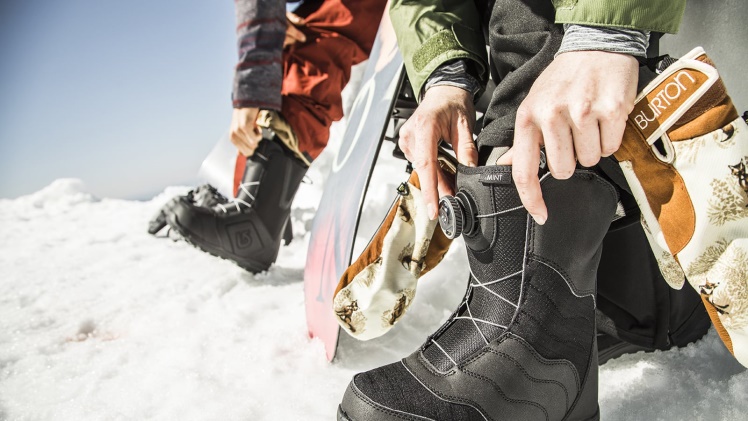Snowboard boots, like other snowboarding equipment, come in a variety of styles and features. With so much to choose from, you may end up picking the wrong one.
Although not all of them make that much difference, having the right equipment can be the difference between enjoying your ride and costing you an ankle.
There are four areas to pinpoint when selecting one.
Fit and Sizing
The most crucial aspect of selecting boots is ensuring proper sizing and fit.
Your snowboard boot size may be the same as your shoe size or a bit smaller, depending on how you use your shoes and the boot brand.
The good thing is, Snowboard boots have a feature known as a Mondo-print, which specifies the size of foot that the boot was made to suit. So, if a boot’s Mondo-print is 28cm, it should suit someone with a 28cm foot. It isn’t always correct, but it’s an excellent place to start.
When it comes to pressure points, you should avoid them at all costs! It’s only possible to know for sure if you try the boots on in person.
Boot Flex
In terms of finding your ideal boot flex, it’s largely about your style and talent level. However, it’s not wrong also to have your personal preference. But this doesn’t change the fact that you can’t try something new to see if it feels even better.
For instance, one suggestion for beginners is to use a soft-medium flex. Meanwhile, freestylers should use a soft or soft-medium flex, and free-riders should use a stiff flex.
Moreover, all mountain riders should use a medium-soft, medium or medium-stiff flex.
Adaptability with Snowboard and Bindings
Compatibility with other equipment is also as important. The size and flex of your Snowboard boots should be in line with the Snowboard’s proper width and your binding size.
Yes, when it comes to flex, it’s usually a good idea to match the flex of your boots, bindings, and Snowboard.
If you have a soft flexing snowboard with rigid boots, for example, you are effectively defeating the point of having a soft flexing snowboard.
Lacing Systems
Finally, choose the perfect lacing system. Although each brand’s variations vary slightly, these are the three broad categories that most lacing systems fall within.
-
Traditional Standard lacing
As the name implies, you can adjust how loose or tight the boot is, and you can do it across different portions of the boot.
In return, they are less likely to create pressure points. If you tend to go for a less expensive boot, then it fits you well.
-
Boa Systems
It’s quite simple to tighten them by twisting the knob. If you’re the type to have a shaky grip, it’s easy to put on – and you can do it with gloves on. You’re less likely to get too much heel lift.
-
Speed Lacing Systems
As the name suggests, it’s all about speed. You can lace it up quickly! Also, it just adds a few grams to your boots.
Moreover, it contains an ankle harness that can help with a heel lift and tightening the ankle, which you can easily retighten during the day.
Of course, this does not imply that you require a change. You may already have the gear that is ideal for you.
However, if you’re buying new gear or you believe you might be getting more out of your current gear, do your study.
You see, finding the proper gear can make a significant difference.

